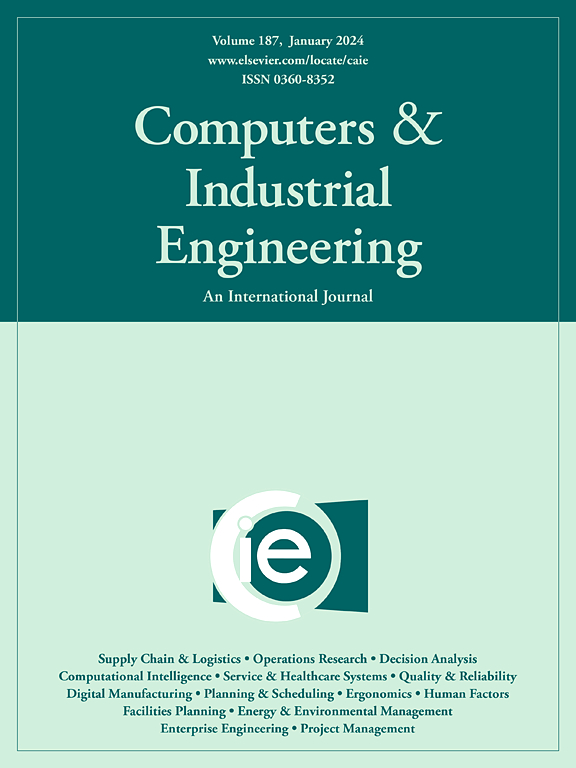Autoencoders for monitoring Poisson-dependent process steps based on state space representation
IF 6.7
1区 工程技术
Q1 COMPUTER SCIENCE, INTERDISCIPLINARY APPLICATIONS
引用次数: 0
Abstract
Process monitoring is becoming increasingly essential for ensuring safety in industrial production and maintaining product quality. In many real-world applications, processes consist of multiple interdependent stages, with the quality of each stage following a Poisson distribution. Autocorrelation is often a crucial element in Poisson-dependent multistage processes, and its omission leads to invalid conclusions. To effectively model the flexible autocorrelation, present in count data, state-space models are typically employed under specific conditions. This paper contributes to this area by presenting an effective deep learning approach, an autoencoder-based control chart, tailored for Poisson multistage processes. It presents a new training method based on an optimization problem for the stacked autoencoder, utilizing the Poisson state space representation. Numerical Phase II studies demonstrate that, compared to the state-of-the-art group EWMA control chart, the proposed monitoring scheme outperforms its competitor under various out-of-control situations. As another notable contribution, it also introduces a novel autoencoder-diagnostic approach to identify the stage responsible for any shifts. Additionally, comprehensive simulation results reveal a considerable difference in precision, with the autoencoder diagnosis classifier substantially exceeding the benchmarks. Furthermore, these findings are supported by a real-world application from the financial market.
基于状态空间表示监测泊松相关过程步骤的自动编码器
过程监控对于确保工业生产安全和保持产品质量变得越来越重要。在许多实际应用中,过程由多个相互依赖的阶段组成,每个阶段的质量遵循泊松分布。自相关往往是泊松依赖多阶段过程的一个关键因素,它的遗漏将导致无效的结论。为了有效地对计数数据中存在的柔性自相关进行建模,通常在特定条件下使用状态空间模型。本文通过提出一种有效的深度学习方法,一种基于自动编码器的控制图,为泊松多阶段过程量身定制,为这一领域做出了贡献。利用泊松状态空间表示,提出了一种基于优化问题的叠置自编码器训练新方法。第二阶段的数值研究表明,与最先进的群体EWMA控制图相比,所提出的监控方案在各种失控情况下都优于竞争对手。作为另一个值得注意的贡献,它还引入了一种新的自动编码器诊断方法来识别导致任何移位的阶段。此外,综合仿真结果表明,自编码器诊断分类器在精度上有相当大的差异,大大超过基准。此外,这些发现得到了金融市场实际应用的支持。
本文章由计算机程序翻译,如有差异,请以英文原文为准。
求助全文
约1分钟内获得全文
求助全文
来源期刊

Computers & Industrial Engineering
工程技术-工程:工业
CiteScore
12.70
自引率
12.70%
发文量
794
审稿时长
10.6 months
期刊介绍:
Computers & Industrial Engineering (CAIE) is dedicated to researchers, educators, and practitioners in industrial engineering and related fields. Pioneering the integration of computers in research, education, and practice, industrial engineering has evolved to make computers and electronic communication integral to its domain. CAIE publishes original contributions focusing on the development of novel computerized methodologies to address industrial engineering problems. It also highlights the applications of these methodologies to issues within the broader industrial engineering and associated communities. The journal actively encourages submissions that push the boundaries of fundamental theories and concepts in industrial engineering techniques.
 求助内容:
求助内容: 应助结果提醒方式:
应助结果提醒方式:


